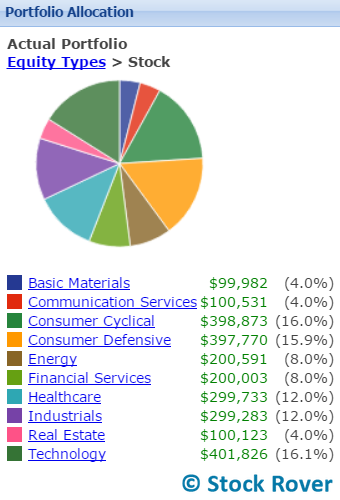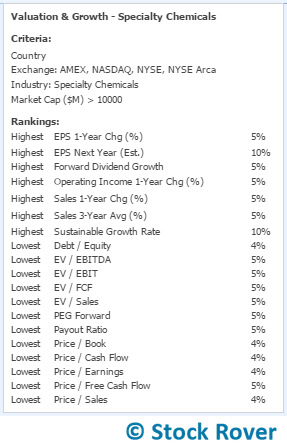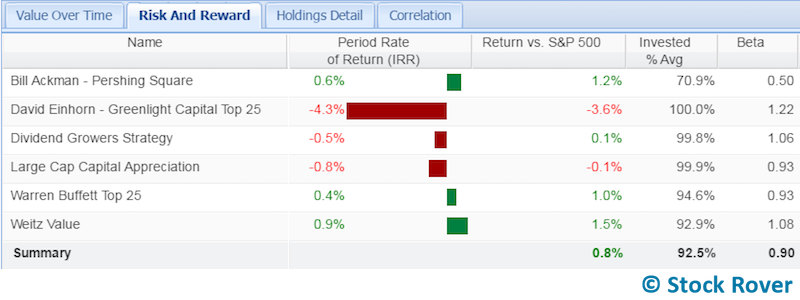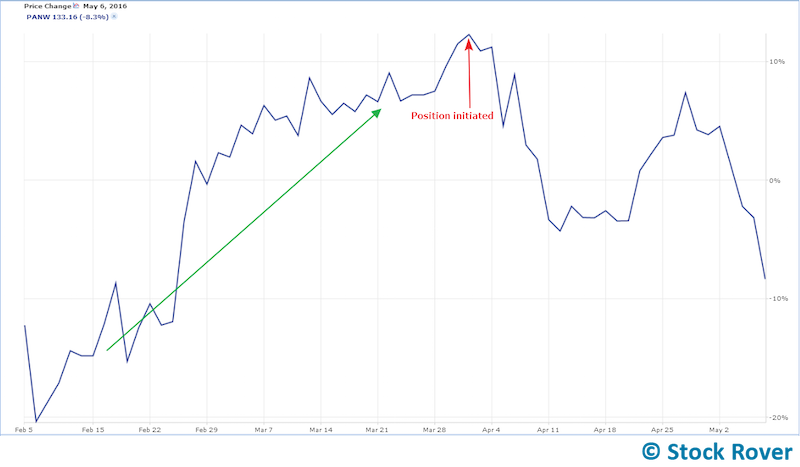The Large Cap Capital Appreciation Portfolio (LCCAP) was started on March 31, 2016 with the goal of outperforming the S&P 500 using the Growth at a Reasonable Price (GARP) strategy. Since then, the portfolio has marginally underperformed the index primarily because of two holdings namely: Alaska Air Group and Palo Alto Networks. But before we get into why these two stocks have not done so well, let us first look at how the portfolio was constructed.
Contents
Sector Choices
The creation of the LCCAP began with choosing sectors before anything else. Generally, I avoided sectors that have been severely underperforming in the near to distant past and had gloomy prospects. However, I did consider an underperforming sector if it was making a comeback. For instance, I initially tried to avoid the financial services sector entirely but ended up looking at it because the Fed was considering 4 rate hikes for 2016 back in March.
Furthermore, within chosen sectors, I stayed away from industries with negative outlooks. For example, even though I was looking at the technology sector, I avoided the semi-conductor industry because iPhone/smartphone demand was slowing down. In the end, I had industries that had neutral to bright future prospects in sectors that had neutral or positive outlooks.
Moreover, in the sector weight allocations, I took into account the near term prospects of the economy. Some key economic indicators such as international trade, consumer spending, etc. pointed to a lower economic growth in the near term. Consequently, I allocated the consumer defensive sector a 16% weighting as shown below, which I wouldn’t have if otherwise. Indications of low US economic growth grew as global economic growth decelerated.

Screeners: Between Growth and Value
Based on the competing demands of the GARP strategy, I ran screeners that sort to balance between growth and valuation adjusting for the individual characteristics of each industry. For example, the following screener filtered for companies that were undervalued and presented significant growth potential in the specialty chemicals industry:

The results of the screener were limited to the top 15 and filtered further with screeners such as the 17 Factor Growth Stock Ranker (which is available in the Library). Usually the results had fewer than 10 stocks because of the market cap filter (above $10B). From the above screener we had four companies shown below:
After running several screeners and looking at management and economic moat, the list was narrowed down to two stocks—Sherwin-Williams and PPG Industries. I then did a more in depth comparison of the two companies which revealed SHW to be a better capital employer and a more shareholder friendly company. Additionally, Sherwin was better able to translate the drop in titanium dioxide prices into significant cost savings while benefiting from the rebound in housing and construction. Ultimately, Sherwin-Williams made the cut. Generally, save for industry and sector nuances, the process for each of the 25 candidates in the portfolio was similar.
Portfolio Performance
In first month of trading, the Large Cap Capital Appreciation Portfolio has been off to a slow start primarily because of Alaska (ALK) and Palo Alto (PANW). As shown below by the Return vs S&P 500 (the difference between the portfolio’s total return including dividends and the S&P 500 total return), the portfolio has marginally (-0.1%) underperformed the S&P 500 so far:

Of course there have been worse days like April 22, when the portfolio was down 1.7% against the S&P 500 but even then it was Alaska Air and Palo Alto that have underperformed the most. So what exactly is happening with these companies?
The Ugly
Alaska Airlines has been underperforming primarily because its acquisition of Virgin Airlines (VA). As with most acquisitions the stock of the acquirer drops and that of the acquired climbs and that was the case with Alaska and Virgin. But Alaska’s drop was compounded by the fact that the market saw the deal as expensive. However, I think the deal, even though expensive, made sense for Alaska (here is why [5]). The acquisition does alter the fundamentals of Alaska; but for good. In the near to long term, it should pay off.
Palo Alto Networks has been underperforming since the inception of the portfolio mainly because of timing. When we initiated a position (red arrow) on March 31st, when the stock was over extended following a great run (green arrow) consequently it was ready for a pullback.

However, we knew this was inevitable when we started the portfolio; the introductory article [6] stated:
“Although it would have been preferable to initiate our positions when we felt conditions were favorable for each stock, initiating all positions on the same day will make tracking the performance of the portfolio easier.”
Palo Alto’s next earnings release date is May 26 but before then we’ll review the position to see if anything fundamental has changed. Palo was initiated as a growth play (and they are growing really fast—sales grew 40% in the past year), so the fundamental question is has anything happened that will decelerate that growth? Stay tuned to find out.
The Bad
Initially, I was expecting Chipotle (CMG) to be the worst performer but it hasn’t done as badly as Alaska or Palo Alto. Its recent report confirmed that sales and earnings were down (the market already knew this) but it also revealed that they weren’t as bad as expected. The next quarter will tell if the market has overreacted to CMG’s troubles.
And the Good
On the other hand, the best performers so far are Amazon, Mondelez, Northrop, Constellation, Marsh & McLennan, Magellan, Ventas, and Amgen as show below. Amgen was the fast starter and topped the portfolio for the first few weeks. Northrup, Constellation, Marsh & McLennan, and Mondelez have been the consistent performers while Magellan and Ventas have been very volatile. Amazon was the dark horse among the outperformers: stealing the top spot after its earnings announcement last week.

Overall the portfolio looks strong and should begin to outperform as the underperformers regain their losses. This is a long game after all. Onto the second month!
You can download the Large Cap Capital Appreciation Portfolio from the Library.
